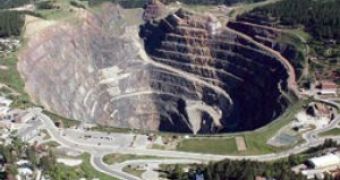Our universe is made of ordinary stuff: electrons, neutrons, protons. But these particles have some weird cousins that occasionally flash into existence for just moments. The neutrinos is an example of elementary particles, but it displays some unusual properties: it travels close to the speed of light, has no electric charge and can pass through any form of matter almost undisturbed.
They are usually produced by the radioactive decay and nuclear reactions in stars or when cosmic rays hit atoms. However, detecting them has so far proved to be extremely difficult. That's why scientists decided to start searching for them in a rather unusual place: underground.
An underground laboratory complex designed to look for them and other mysterious particles in the Universe will be built in a historic gold and silver mine named Homestake, in South Dakota's Black Hills and could become the largest of its kind in the world.
This is actually the oldest mine in the Western Hemisphere, where many scientific institutions will gather and build a high precision instrument. The National Science Foundation and partners will invest up to $500 million in the conception and design of the new lab, over three years.
The location has been selected due to the fact that the thick rock shield above will be acting like a shield against the trillions of cosmic rays constantly raining down on the planet, which means that scientists will be able to focus on the rarer neutrinos.
They are able to pass unharmed through the thick layer of rock above and will be caught in a huge tank to be built in the lab. Previously, such a tank filled with dry cleaning solvent successfully detected neutrinos one mile above the ground, in the same mine.
Neutrinos are thought to hold the secrets of how the Universe is stitched together and could also explain the origins and evolution of the elusive dark matter. Other applications could be developed in the underground lab, which would address various scientific fields, like geology, microbiology and engineering.

 14 DAY TRIAL //
14 DAY TRIAL //